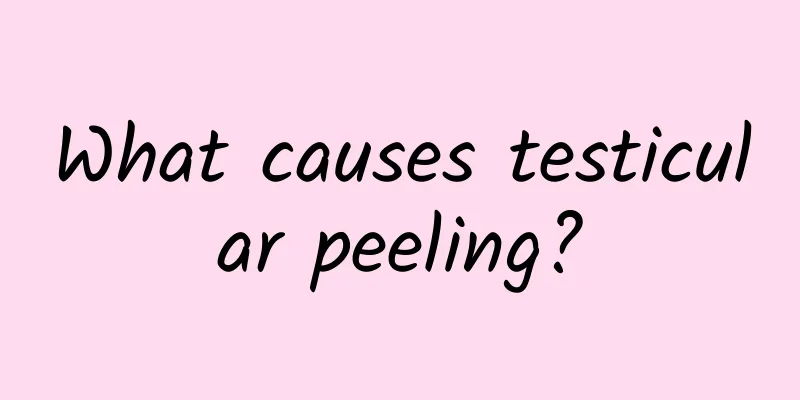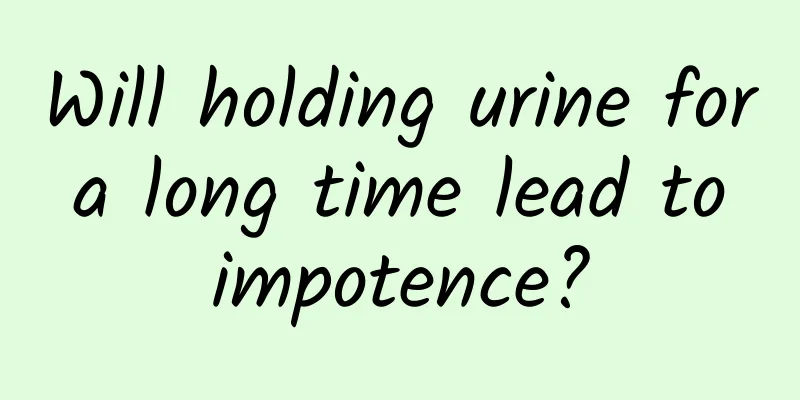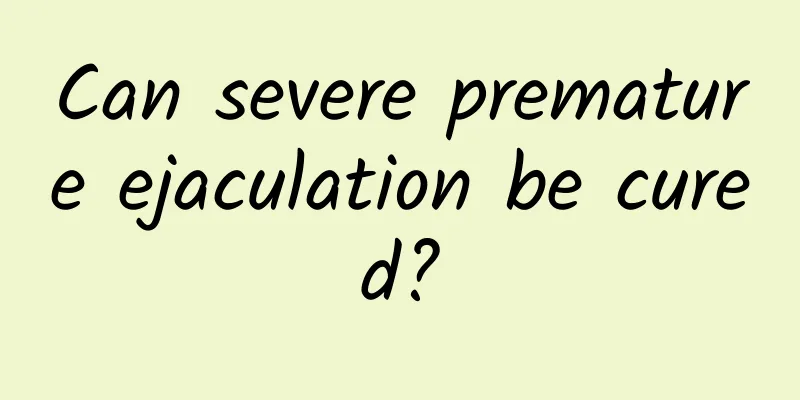Prostate injection therapy

|
Men will feel more pain when they have prostate problems. The so-called prostate problems are often inseparable from inflammation. The clinical manifestations are that the patient urinates frequently, the urine is not clean, etc., which has a greater impact on the couple's life. Xishang treats prostatitis through drug injections, mainly for anti-inflammatory purposes, but the effect of prostate injection treatment also depends on the individual's physical condition and the severity of the disease. Everything should be based on the doctor's advice. Western medicine treatment of prostatitis is mainly based on antibacterial and anti-inflammatory treatment. The basic treatment method is "antibacterial + anti-inflammatory + consolidation treatment", and large doses of antibiotics are often used. Due to the special structure of the prostate, the efficacy of most drugs is less than 10%, and some pathogens have strong resistance to Western medicine, such as mycoplasma, chlamydia, candida, staphylococcus, gonococcus, etc. After 3 to 5 days of medication, these pathogens have developed strong drug resistance. Continuing to use the same type of drugs will have no effect at all and will only cause harm to the human body. Therefore, wanting to cure prostatitis with Western medicine is like climbing the sun, the possibility is very small. Traditional Chinese medicine can completely cure prostatitis, but the process of curing prostatitis with traditional Chinese medicine is slow and long, requiring a combination of treatment, regulation and nourishment, and frequent adjustments to the prescription. The general healing period is more than one year. Therefore, most people cannot persist, and the cost of treatment is also very objective. Destructive treatment methods for prostate disease Here is a summary of the destructive treatment methods that patients encounter in clinical practice. Please pay attention to the following when undergoing treatment: 1. Antibiotic treatment. The outer layer of the prostate is wrapped in fat, which makes the prostate tissue a permeation barrier. Therefore, most antibacterial drugs cannot pass through this barrier to reach an effective concentration in the prostate, and it is easy for bacteria to develop drug resistance. At the same time, it also kills white blood cells and beneficial bacteria in the body, which reduces the body's resistance and easily causes secondary infection, bringing greater difficulties to treatment. When the human body is inflamed, the immune system will produce white blood cells, which is the body's resistance reaction, but the abuse of antibiotics will kill white blood cells and reduce the body's resistance, which will breed other bacteria and multiply, causing new diseases, making treatment much more difficult. 2. Prostate perineal closure injection. This is to inject the drug into the prostate through the perineum with a needle, which is very harmful. We know that multiple gluteal muscle injections may form a hard lump (tumor) in the gluteal injection area. The prostate is a very small organ compared to the buttocks and its internal structure is very complex and delicate. How can it withstand multiple injections? The prostate is composed of 5 lobes, 16 pairs, and 32 glandular ducts. It is impossible to inject all 5 lobes and 32 glandular ducts in each injection. Moreover, the drugs injected are mainly antibiotics, hormones and anesthetics. The effect will be seen at the time, but the disease will recur soon. Multiple injections will make the prostate hard, causing prostate calcification and fibrosis damage and repeated infections, which will only aggravate the disease and make the prostate more blocked. It has no therapeutic significance and has long been recognized by the medical community as a treatment method that damages the prostate. 3. Probes enter the body with microwaves, radio frequencies, lasers, etc. These treatments have long been eliminated abroad. The principle is to use a treatment probe to enter the prostate to perform local heating to accelerate blood circulation. The treatment feels better, but it cannot really make the circulation smooth forever. After limited use, symptoms will appear soon. The prostate is an important organ of the male reproductive system. Local heating of the prostate will destroy the physiological function of the prostate (completely different from sitz bath therapy and light wave extracorporeal treatment, which is qualitatively different), causing great damage to the body. Repeated use will cause the prostate to lose its function. 4. Prostate perfusion. The purpose is to increase the drug concentration in the prostate, and to perfuse the drug from the anterior urethra to the posterior urethra, but the drug is not easy to enter the prostate. Because the umbrella-shaped opening (reverse switch) from the prostate to the urethra is only open from the prostate to the urethra (when sexually excited), and is closed from the urethra to the prostate. This function is to prevent bacteria in the urethra from entering the prostate. Therefore, in order to pass the drug through this umbrella-shaped opening into the prostate, high pressure must be applied. High pressure not only destroys the urethra but also destroys the umbrella-shaped switch, causing the umbrella-shaped switch to lose its reverse closing function and produce serious sequelae. 5. Interventional ablation (field effect ablation). It is actually a combination of prostate perfusion and physical heat therapy in the gland. It has no therapeutic value. Once it was put into use abroad, it was immediately shot down. It is an extremely destructive treatment method. Not only can it not make the 32 glandular ducts in the prostate unobstructed, but the high temperature in the gland will also damage the outer wall capsule of the prostate. The protection membrane of the outer wall of the prostate is damaged, just like a person losing his outer coat to resist severe cold. The prostate is more susceptible to inflammation. This method cannot cure the disease and will cause serious sequelae. 6. The effect of anal administration is not obvious. However, repeated use may cause congestion in the prostate, leading to poor circulation, making it difficult to excrete waste to the outside of the body, causing blockage, aggravating prostate symptoms, and easily causing side effects. 7. Acupuncture points include perineum, Guanyuan, spermatic cord closure, etc. Chinese medicine injections such as Andrographis and Houttuynia cordata are often used. The drug concentration is difficult to maintain for a long time. Once the patient eats seafood or drinks beer, it is easy to relapse. Long-term injections have side effects and the patient suffers a lot. It is the same as the injection treatment in the second item. 8. It is difficult to cure the disease by drugs or Chinese medicine secret recipes alone. Fighting poison with poison, black spider, dragonfly, sea king recipes, etc., are all based on large amounts of antibiotics and hormone drugs, which not only cannot cure the disease, but also produce serious toxic side effects. 9. Double-lumen catheter. A tube is inserted through the urethra into the area around the prostate. This treatment mainly causes damage to the urethra and destroys the normal structure of the urethra and prostate. Multiple insertions without good results can also cause urinary tract infection and leave serious sequelae. 10. Fat-soluble and so-called anti-resistant antibiotics. It is well known that fat-soluble antibiotics are difficult to penetrate into the prostate after oral administration. The so-called fat-soluble is just a conceptual term introduced to make patients believe that it is not true. Currently, no manufacturer has ever been associated with prostate injection therapy. The medical journals that publish reports about the invention of antibiotics that do not cause drug resistance use terms such as "penetrating, fat-soluble, and directly targeted" as nouns and concepts without any scientific basis. First, understand the connection between the prostate and the urethra. There are two channels between the prostate and the urethra, one is the prostatic fluid channel, and the other is the sex hormone channel. Prostatic fluid channel: The prostatic fluid channel is an umbrella-shaped opening from the prostate to the urethra. This opening is like a switch, and is usually closed. Only when the sexual impulse ejaculates, this opening opens to inject prostatic fluid into the urethra (prostatic fluid is the nutrition of sperm, is the necessary condition for sperm to survive after leaving the male body, and is the catalyst for semen liquefaction. For common knowledge in this regard, please visit our company's website). This opening begins to close after the normal ejaculation ends, and is completely closed after the sexual activity is completed, that is, after the congestion completely subsides (normally 2-4 hours). Off topic: Frequent masturbation, holding back semen, etc. are abnormal ejaculation. It takes 8-48 hours for the pelvic congestion to completely subside after abnormal ejaculation. At this time, the umbrella-shaped opening is in an open or half-open state, and bacteria and viruses will go up into the prostate and settle in the prostate. This is the beginning of the prostate's suffering. Why is it said that bacteria will not enter the prostate during normal ejaculation? Because, after normal ejaculation, the congestion subsides quickly, and at this time, prostate fluid remains in the umbrella-shaped opening of the prostate. The prostate fluid has a strong resistance to bacteria and viruses, and it also has the function of killing viruses and bacteria. Therefore, normal ejaculation will not cause bacteria or viruses to enter the prostate. It does not mean that once bacteria or viruses enter the prostate, the prostate will become inflamed. Prostatitis occurs under certain conditions, such as when you have a fever, have a cold, or your physical condition is weakened, or when the number of bacteria and viruses reaches a certain level. Gonadal hormone channel: There is a diaphragm (diaphragm pore) between the prostate and the urethra, which separates the prostate from the urethra. The diaphragm and the surrounding gonadal nerves are distributed through the prostate and the urethra (penis). When sexually excited, the prostate transmits gonadal hormones to the penis through the diaphragm and surrounding sexual nerves, stimulating the pituitary axis to supply blood to the corpus cavernosum of the penis, causing the penis to erect. Off topic: There are many patients with sexual dysfunction and impotence, which are caused by prostate problems. According to clinical statistics, more than 20% of people have no symptoms after suffering from prostatitis, but it will lead to sexual dysfunction or infertility. When diagnosing sexual dysfunction, male doctors often do not consider the problem of prostatitis and fail to promptly confirm that sexual dysfunction is caused by prostate disease. Therefore, blindly nourishing the kidneys and using aphrodisiacs will only make things worse. Now that we understand the relationship between the prostate and the urethra, let’s look at two treatment methods: 1. Urethral instillation: Urethral instillation is scientifically called "high-pressure urethral instillation". High-pressure urethral instillation is to use pressure to infuse drugs (usually antibiotics) into the urethra through urethral catheterization. This treatment method uses high pressure to force the umbrella-shaped opening to open, allowing the drug to be infused into the prostate through the umbrella-shaped opening, thereby increasing the drug concentration in the prostate. Harm or sequelae: ① Forcing the opening of the umbilical opening will cause the umbilical opening to swell and be unable to close for a long time, resulting in chemical prostatitis and bacterial prostatitis; ② After multiple infusions, the umbilical opening is stimulated by drugs and damaged by bacteria in the posterior urethra, and the closure nerve of the umbilical opening is disordered, resulting in the umbilical opening being unable to close, or closing and closing from time to time, causing prostatic fluid to flow into the urethra, stimulating the urethra and producing a series of uncomfortable symptoms. At the same time, urine flows into the prostate, and the consequences are self-evident. 2. Field-effect ablation (also known as interventional ablation): Field-effect ablation, scientifically speaking, is "interventional field-effect ablation therapy". The probe is inserted through the urethra, puncturing the diaphragm between the prostate and the urethra, allowing the probe to enter the prostate, while heating the prostate, generally at 40-43 degrees. The higher the temperature, the more painful the patient is. After heating, antibiotics are injected into the prostate through the central hole. Hazards or sequelae: ① The probe enters the prostate and heats it, destroying the tissues and gonadal nerves inside the prostate, causing some cell proteins to coagulate and form free bodies. These necrotic free bodies are very likely to become cancerous under certain conditions and at a certain time; ② After the diaphragm is punctured, cauliflower-like hyperplasia occurs under the effects of drugs, high temperature and urethral bacteria, which can never heal, causing the prostate and urethra to form an interconnected body. Prostatic fluid enters the urethra and produces a stimulating effect, and urine bacteria enter the prostate and cause prostate inflammation. These sequelae are damage that can never be compensated. At present, this treatment method is highly controversial in the medical community, with more than 80% of experts and scholars holding a negative attitude, and less than 20% holding a positive attitude. This treatment method was introduced to my country from Germany in August and September 2005, but it was officially put into use in April and May 2006. Less than a year after the clinical trial, domestic experts and scholars have raised objections, but the product was banned less than half a year after it was put on the market overseas. Patients who choose this treatment method should be cautious. |
<<: Surgical treatment of enlarged prostate
>>: What's wrong with a man's butthole being hairy?
Recommend
What to do if the glans penis becomes red and itchy
The male reproductive organ is the most important...
How long does it take for acute prostatitis to heal?
In recent years, more and more men have suffered ...
Does extracorporeal ejaculation harm the body?
Extracorporeal ejaculation refers to a contracept...
What's wrong with the small bump under the glans?
The glans is a component of the male reproductive...
What causes a lump in the scrotum?
The living environment is very poor nowadays, whi...
At what age do men have morning erections? The situation is very complicated!
Morning erections are a normal phenomenon for men...
What should people with low blood pressure eat? These three types of food can be eaten regularly
Low blood pressure is a common condition for many...
Is your penis up to standard? What is the normal length of an erect penis?
Many men seem to be dissatisfied with their penis...
Thyroid cancer | Will calcification of thyroid nodules turn into cancer?
Everyone may be familiar with thyroid cancer, but...
What are the consequences of high urine white blood cell count in men?
Many men are often found to have high white blood...
What department should men go to if they can’t hold their urine?
In daily life, men have difficulty holding back u...
Men who sit here often are doomed to contract hepatitis
Chinese people have had a saying since ancient ti...
Pictures of cauliflower-like things on the penis
Abnormalities in a man's penis are a very wor...
Analysis of the reasons why men do not ejaculate
There are many factors that cause men to not ejac...
What are the benefits of red beans? How to make red bean corn porridge?
Corn Porridgestyle="text-align: left;"&g...









